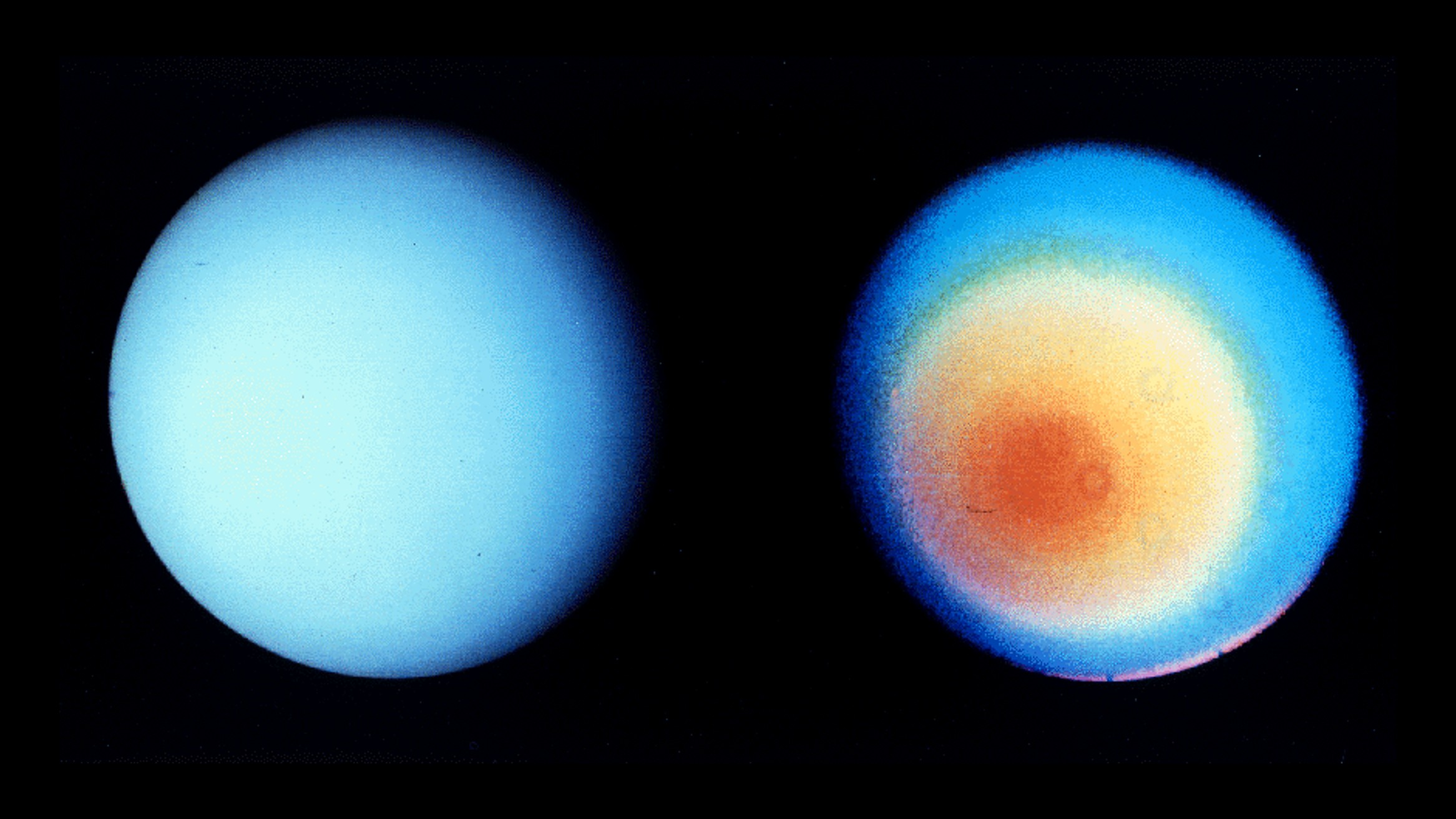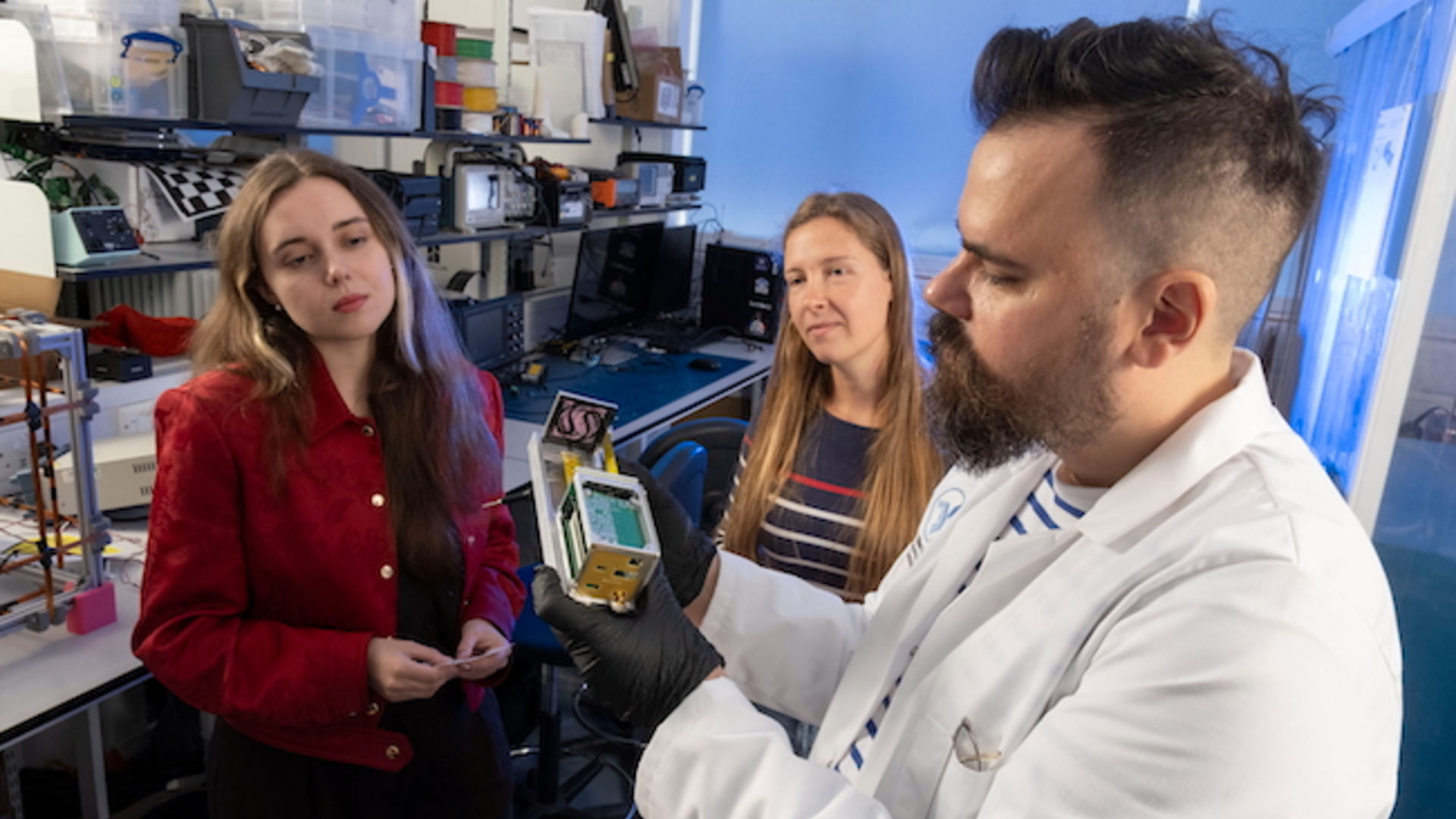James Webb Space Telescope will heat up studies of our solar system's 'ice giants'

NASA's next-generation space telescope has a blue-eyed special among its solar system observations.
The James Webb Space Telescope will soon turn its attention to two intriguing "ice giants" — Uranus and Neptune — after releasing its first operational images on July 12. Webb's sharp eyes and deep-space location will be especially valuable in ferreting out details about these two worlds, given only a single spacecraft (Voyager 2) cruised by them briefly in the 1980s.
Since then, scientists have been forced to use numerous telescopes to keep tab on the weather on these worlds, and Webb will be a welcome addition to the team. Scientists want the observatory to study the composition and temperature of each atmosphere to get a sense of how circulation patterns and weather play out on the distant worlds, according to a 2020 statement about the planned research.
Live updates: NASA's James Webb Space Telescope mission
Related: How the James Webb Space Telescope works in pictures
As community calls mount for a mission to Uranus and Neptune, Webb represents an opportunity to look at these worlds in high definition to learn more about their differences from Jupiter and Saturn. Neptune and Uranus are smaller, and have interiors that are less rich in hydrogen and helium, than their larger neighbors.
"The key thing that Webb can do that is very, very difficult to accomplish from any other facility is map their atmospheric temperature and chemical structure," study leader Leigh Fletcher, a planetary scientist at the University of Leicester in the United Kingdom, said in the release from the Space Telescope Science Institute (STScI) in Baltimore.
"We think that the weather and climate of the ice giants are going to have a fundamentally different character compared to the gas giants," Fletcher said. "That's partly because they're so far away from the sun, they're smaller in size and rotate slower on their axes, but also because the blend of gases and the amount of atmospheric mixing is very different compared with Jupiter and Saturn."
Breaking space news, the latest updates on rocket launches, skywatching events and more!
Webb's mid-infrared range of wavelengths will allow investigators to distinguish between gases in the upper atmospheres of the two planets, and figure out how sunlight is affecting their production (if at all).
The studies are being performed through a guaranteed time observations program with Webb, led by Webb interdisciplinary scientist Heidi Hammel. Hammel is also a STScI planetary scientist well-known for decades of telescopic and spacecraft observations of Uranus and Neptune, including with Voyager 2.
Follow Elizabeth Howell on Twitter @howellspace. Follow us on Twitter @Spacedotcom and on Facebook.

Elizabeth Howell (she/her), Ph.D., was a staff writer in the spaceflight channel between 2022 and 2024 specializing in Canadian space news. She was contributing writer for Space.com for 10 years from 2012 to 2024. Elizabeth's reporting includes multiple exclusives with the White House, leading world coverage about a lost-and-found space tomato on the International Space Station, witnessing five human spaceflight launches on two continents, flying parabolic, working inside a spacesuit, and participating in a simulated Mars mission. Her latest book, "Why Am I Taller?" (ECW Press, 2022) is co-written with astronaut Dave Williams.

